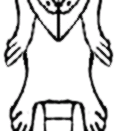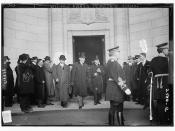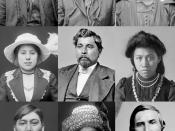Desperately searching for information on Indians, a young reader in a library somewhere in the Midwest navigates between the rows of histories, documentaries, and narratives about this unknown and intriguing culture. But as he dives into the shelves, he begins to realize that he can find waves of literature written by non-Indians, but none written the Indians themselves. The boy thinks, How can these people really give me an accurate description of the culture without truly experiencing it themselves? Then, like a gift from the heavens, Louise Erdrich's Tracks drops off of the old wooden bookshelf behind him, and the young reader, realizing Erdrich's Native American background, immediately seizes the book and gulps down each and every Indian word, syllable, and letter. Sadly, non-Indian academics have composed most American Indian literature written to this day, despite the fact that most of them don't truly understand the culture as those who have immersed themselves in it do.
Angela Cavender Wilson, in her article entitled "American Indian History or Non-Indian Perceptions of American Indian History," describes the basic pitfall of current Native American history, that non-Indians who don't understand the Indian world have written it. This lack of understanding on the part of the historians results from their refusal to accept the tsunami of information available to them through oral history. In contrast, Louise Erdrich, raised as an Indian, does understand the culture because she has immersed herself in it and has not ignored the oral tradition (she actually employs it through Nanapush), and her grasp of Indian society allows her to convey an extremely deep understanding of her culture.
Though Tracks doesn't fit the mold of a typical history text, in the Native American culture, oral tradition and history serve similar purposes; therefore one can compare the authors of...


